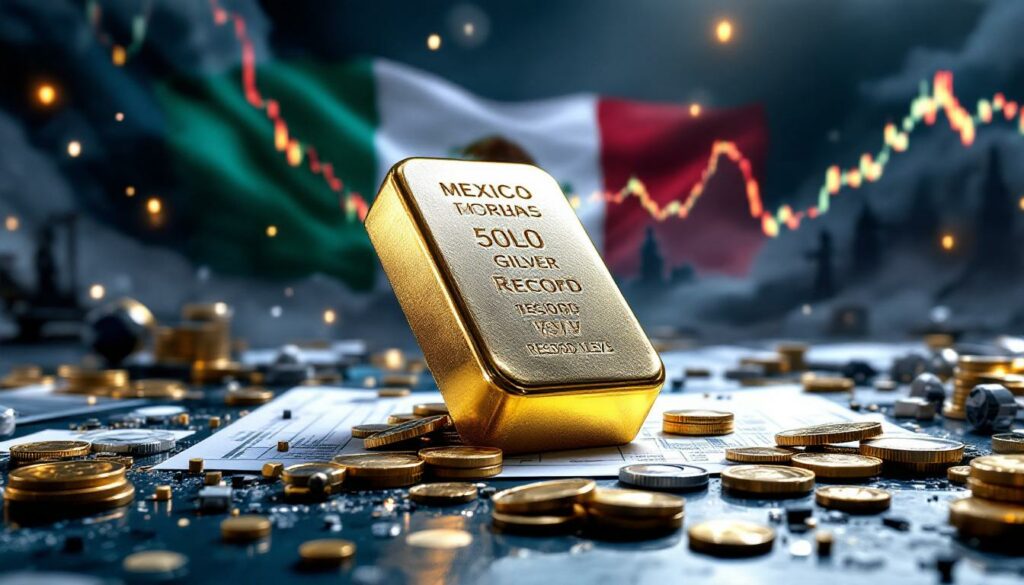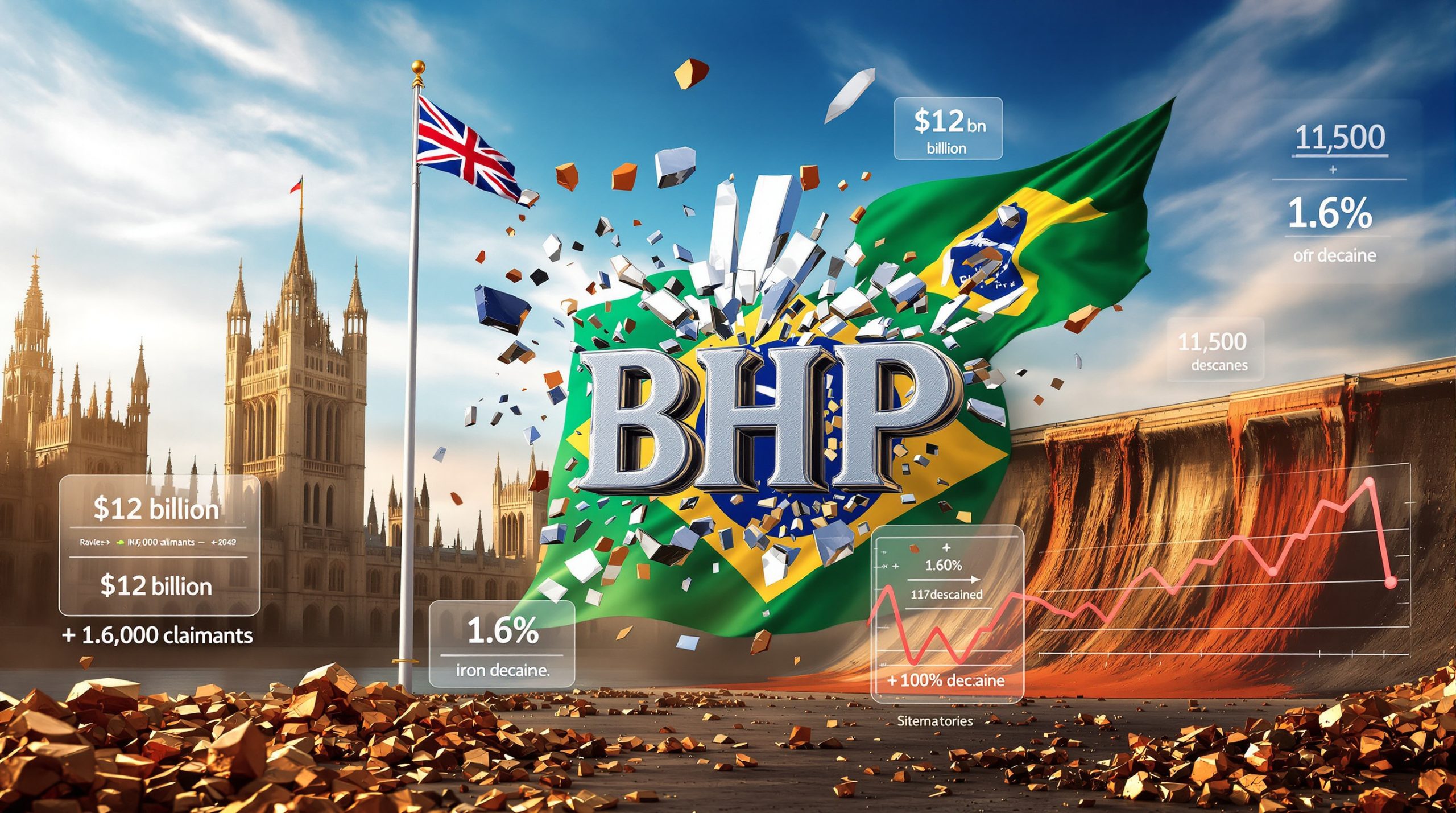Silver's Record Rally: Understanding the Impact of Tariffs and Global Market Dynamics
Silver prices have skyrocketed to unprecedented levels, reaching $38.96 per ounce in July 2025—the highest since 2011. This historic surge comes amid significant market disruptions and shifting global economic policies that have dramatically reshaped the precious metals landscape.
The rally represents not just a momentary spike but a culmination of several powerful market forces converging simultaneously, creating what industry experts are calling a "perfect storm" for silver prices. The silver surge and tariffs impact has been particularly notable in how it's reshaping investment strategies globally.
What Triggered Silver's Historic Price Surge?
The dramatic rise in silver prices can be traced to several interconnected factors, with trade policy standing at the forefront of market-moving events.
Recent Tariff Policies and Market Reaction
President Trump's administration recently imposed 30% tariffs on imports from both the European Union and Mexico—a policy decision with immediate ramifications for the silver market. As the world's leading silver producer, Mexico's inclusion in these tariff impacts on silver sent shockwaves through global commodity markets.
The announcement triggered immediate concern about supply constraints, pushing silver to $38.96 per ounce on July 14, 2025. This represents silver's highest price point since 2011, marking a dramatic shift in market dynamics.
"When tariffs target a top producer like Mexico, the entire supply chain faces uncertainty. Markets hate uncertainty, so prices surge as both industrial users and investors scramble to secure supply," explains commodities analyst Maria Rodriguez.
The tariff impact was particularly pronounced because Mexico accounts for approximately 23% of global silver production, creating genuine concerns about availability in an already tight market.
Safe Haven Investment Patterns
Beyond the immediate tariff impact, silver has benefited from its traditional role as a safe haven during economic uncertainty:
- Record inflows into silver-backed ETFs reflect growing investor confidence
- Institutional investors have increased allocations to precious metals
- Retail investor participation has surged, particularly through digital platforms
- Silver has attracted investors concerned about inflation and currency devaluation
Unlike purely speculative assets, silver's tangible nature and industrial utility provide a dual foundation for its value proposition during uncertain times.
How Does Silver Compare to Gold in the Current Market?
While both precious metals have performed strongly, silver has distinguished itself from its more expensive counterpart.
Price Ratio Analysis
The gold-silver ratio analysis —a key metric for precious metals investors—has shifted significantly in silver's favour. Historically, this ratio has averaged around 60:1 over the past century, meaning one ounce of gold would buy 60 ounces of silver.
During market extremes, this ratio has fluctuated dramatically:
- 80:1 or higher – Indicates silver is undervalued relative to gold
- 40:1 or lower – Suggests silver may be overvalued compared to gold
The current market shows silver outpacing gold in percentage gains, suggesting a potential reversion toward historical norms. This relative affordability compared to gold continues to attract investors seeking greater upside potential.
Demand Drivers Differentiating Silver from Gold
Silver's unique position comes from its dual identity as both a precious metal and an industrial commodity:
- Industrial applications create substantial demand beyond investment purposes
- Technology sector requirements for silver continue to grow, particularly in semiconductors
- Renewable energy sector demands silver for solar panels and electrical connections
- Medical applications utilise silver's antimicrobial properties
This industrial demand foundation creates a fundamentally different market dynamic than gold, which derives value primarily from investment and jewellery demand.
"Silver is often called the 'poor man's gold,' but that misunderstands its intrinsic advantages. Its industrial demand creates price support that gold simply doesn't have," notes precious metals strategist Thomas Chen.
What Makes 2025 a "Banner Year" for Silver?
The Silver Institute has officially declared 2025 a "banner year" for silver markets, citing extraordinary performance metrics and fundamental shifts in market dynamics.
First Half Performance Metrics
June 2025 delivered historic gains for silver, with prices climbing over 15% in a single month. This exceptional performance built upon already strong first-quarter results, creating momentum that analysts believe could continue.
Key factors driving 2025's exceptional performance include:
- Supply deficits estimated at 150-200 million ounces
- Trading volumes up 35% compared to 2024 averages
- ETF holdings reaching all-time highs
- Industrial demand outpacing production growth
These metrics combine to create what market analysts describe as the strongest fundamental backdrop for silver in over a decade.
Silver Institute's Market Assessment
The Silver Institute's comprehensive market analysis highlights several critical factors driving the current silver bull market:
- Supply and demand imbalance persisting despite higher prices
- Production constraints affecting mine output and refining capacity
- Investment demand spreading beyond traditional Western markets
- Price forecasts suggesting potential for continued upside momentum
The institute's research indicates that while some short-term price consolidation may occur, the fundamental supply-demand dynamics support higher price levels through at least mid-2026.
How Are Interest Rate Expectations Affecting Silver Prices?
Monetary policy remains a crucial driver of precious metals prices, with silver particularly sensitive to interest rate expectations.
Monetary Policy Impact on Precious Metals
Silver, like gold, has traditionally shown an inverse relationship with interest rates. As a non-yielding asset, silver becomes more attractive when interest-bearing investments offer lower returns.
Current market expectations regarding Federal Reserve policy have provided significant tailwinds for silver prices:
- Rate cut probabilities (per CME FedWatch) suggest 70% likelihood of easing by September
- Real yields (inflation-adjusted interest rates) have declined, benefiting precious metals
- Opportunity cost of holding non-yielding assets has decreased
- Historical correlation patterns show silver typically outperforms during rate-cutting cycles
These monetary factors create an environment where capital naturally flows toward hard assets like silver.
Global Economic Indicators Influencing Silver
Beyond U.S. monetary policy, several global economic factors are supporting silver prices:
- Persistent inflation concerns despite central bank efforts
- Currency strength disparities affecting relative pricing
- Manufacturing activity driving industrial silver demand
- Geopolitical tensions increasing safe-haven appeal
Silver's sensitivity to both monetary conditions and industrial demand makes it uniquely positioned to benefit from current economic crosscurrents.
What Role Does Mining Production Play in Silver's Price Movement?
Supply constraints have become increasingly significant in silver's price trajectory, with production challenges amplifying market tightness.
Current Global Silver Production Landscape
The global silver production landscape features several key players facing various challenges:
| Country | Production Rank | Production Challenges |
|---|---|---|
| Mexico | #1 | Tariff impacts, permitting delays |
| Peru | #2 | Political instability, labour disputes |
| China | #3 | Environmental regulations, resource depletion |
| Russia | #4 | Sanctions, export restrictions |
| Poland | #5 | Rising production costs, aging infrastructure |
Mining output has struggled to keep pace with growing demand, creating persistent deficits that support higher prices.
Supply Chain Disruptions and Constraints
Several factors are limiting the market's ability to respond to higher prices with increased production:
- Processing bottlenecks at refineries limit finished silver output
- Transportation challenges delay shipments between mining regions
- Regulatory hurdles extend development timelines for new projects
- Labour market tightness affects staffing at key operations
These supply-side constraints create a fundamental floor for prices, particularly when combined with growing industrial and investment demand.
How Are Mining Companies Responding to Market Conditions?
Major mining companies are implementing strategic initiatives to both capitalise on higher prices and address operational challenges.
BHP's Strategic Battery Partnerships
Mining giant BHP has established groundbreaking partnerships with battery technology leaders to transform its operations:
- Collaboration with CATL (world's largest lithium-ion battery manufacturer)
- Partnership with BYD's Finreams Battery division (major EV producer)
- Focus on developing battery systems for heavy mining equipment
- Implementation of charging infrastructure at mining sites
These partnerships aim to simultaneously reduce operational costs and environmental impact while increasing productivity.
"These partnerships will help reduce diesel use and cut emissions," stated BHP in its announcement, highlighting the dual economic and environmental benefits.
The collaboration targets several specific equipment categories:
- Heavy mining trucks
- Locomotives for ore transport
- On-site electric vehicles
- Charging infrastructure development
Industry-Wide Sustainability Initiatives
BHP's efforts reflect broader industry trends toward electrification and emissions reduction:
- Diesel reduction strategies targeting 30-50% cuts by 2030
- Charging infrastructure networks being deployed at major mining sites
- Electric vehicle adoption accelerating for both underground and surface operations
- Environmental impact measurement becoming standardised across the industry
These initiatives not only address environmental concerns but also provide operational benefits through reduced maintenance costs and improved reliability.
What's Happening with Deep Sea Mining for Critical Minerals?
The search for new mineral sources has expanded to previously untapped frontiers, with deep sea mining debate emerging as a controversial but potentially significant source.
Lockheed Martin's Re-entry into Ocean Mining
Defense and aerospace giant Lockheed Martin has made a strategic move into ocean mining through the acquisition of two mineral-rich licenses in the Clarion-Clipperton Zone of the Pacific Ocean.
These licenses, dormant since the 1980s, cover areas believed to contain significant deposits of:
- Nickel
- Cobalt
- Copper
- Rare earth elements
- Manganese
Lockheed COO Frank St. John revealed the company is "working closely with the Pentagon to secure supplies of key minerals like nickel and cobalt," underscoring the strategic importance of these resources.
Regulatory Challenges and Progress
Despite the potential, ocean mining faces significant regulatory hurdles:
- The International Seabed Authority in Jamaica continues deliberating on regulations
- President Trump has declared seabed metals "strategic" resources
- Environmental concerns remain a major consideration
- Commercial operations face uncertain timelines
The regulatory framework remains in flux, with competing interests between resource security advocates and environmental protection groups shaping the debate.
How Is Safety Performance Evolving in the Mining Sector?
Despite technological advances, safety remains a critical challenge for the mining industry, with concerning trends emerging in recent data.
Concerning Fatality Trends
The International Council on Mining and Metals (ICMM) reported 42 worker fatalities in 2024, representing a troubling reversal of previous safety improvements:
- South Africa accounted for more than one-third of these deaths
- Equipment accidents and rockfalls were the primary causes
- The trend reversed years of improving safety statistics
- Even major operators with strong safety cultures experienced incidents
These statistics highlight the ongoing dangers in mining operations despite technological advances and safety protocols.
Industry Response to Safety Challenges
The industry is responding with renewed focus on comprehensive safety approaches:
- ICMM guideline updates emphasising systematic risk management
- Protective technology adoption including proximity detection and remote operations
- Mental health considerations expanding the definition of workplace safety
- Best practice sharing across global operations
The ICMM has specifically noted that "safety must go beyond physical risk," highlighting the importance of psychological wellbeing alongside traditional safety measures.
What's the Outlook for Copper Production Through 2034?
While silver captures current headlines, copper production trends provide important context for the broader mining sector and industrial metals outlook.
Production Growth Projections
According to Fitch Solutions BMI unit, copper production is set for significant expansion:
- Current output (2025): 23.88 million tons
- Forecast output (2034): Nearly 31 million tons
- Average annual growth rate: 2.9%
- 2025 growth rate: 2.5%
This expansion represents a substantial increase in global supply, driven by several key factors.
Regional Production Leaders and Developments
The production growth will be led by several key regions and specific projects:
| Country | Key Developments | Growth Drivers |
|---|---|---|
| Chile | Production recovery | New projects, expansions |
| Mongolia | Oyu Tolgoi mine ramp-up | Underground development |
| Peru | Continued significance | Multiple project expansions |
| Russia | Steady output growth | New Arctic developments |
| Zambia | Production increases | Foreign investment, modernisation |
Analysts attribute this growth to "new mines, expansions, higher copper prices, and strong long-term demand," creating a positive outlook for copper despite short-term market volatility.
What Investment Implications Arise from These Market Developments?
The current precious metals environment presents both opportunities and challenges for investors seeking exposure to this asset class.
Portfolio Diversification Strategies
Investors can approach silver exposure through multiple vehicles, each with distinct advantages:
- Physical holdings (coins, bars) provide direct ownership without counterparty risk
- ETFs and ETNs offer convenient exposure without storage considerations
- Mining equities provide operational leverage to metal prices
- Options and futures allow for sophisticated strategies and hedging
The appropriate allocation depends on investment objectives, risk tolerance, and time horizon.
"Silver's dual nature as both precious and industrial metal makes it an effective portfolio diversifier during periods of both inflation and economic growth," explains portfolio manager Rebecca Zhang.
Long-term Outlook Considerations
Several structural factors support the long-term case for silver exposure:
- Industrial demand growth projections (particularly in green energy)
- Supply constraints limiting production expansion
- Monetary policy evolution amid persistent inflation concerns
- Physical market tightness in key consumption centres
Investors should consider their silver allocation within the context of their broader portfolio strategy and macroeconomic outlook. The tariffs and investment impact extends beyond precious metals to reshape multiple asset classes.
FAQs About Silver Markets and Mining Industry Developments
How do tariffs specifically impact silver prices?
Tariffs on major producing countries like Mexico create supply uncertainty and potential cost increases. When imposed on a top silver producer, these trade barriers can disrupt normal supply chains, leading investors to anticipate reduced availability and higher prices. This perception drives both industrial users and investors to secure supplies, creating additional demand pressure that pushes prices upward.
What makes silver different from other precious metals as an investment?
Silver maintains a dual role as both a precious metal and an industrial commodity. Unlike gold, which is primarily an investment and jewellery metal, silver has extensive industrial applications in electronics, solar panels, medical devices, and more. This dual demand creates unique price dynamics where silver can benefit from both safe-haven investment flows and industrial consumption growth.
How might mining electrification impact silver and copper demand?
Mining electrification creates a positive feedback loop for both metals. As mining companies like BHP adopt battery technologies and electric vehicles, they increase demand for copper (used in motors and charging infrastructure) and potentially silver (used in electronic components). This transition simultaneously reduces carbon emissions while boosting demand for the very metals being mined.
What factors determine whether investors should choose physical silver or ETFs?
The choice between physical silver and ETFs depends on several factors:
- Storage considerations: Physical silver requires secure storage solutions
- Liquidity needs: ETFs offer easier trading and lower transaction costs
- Counterparty risk tolerance: Physical holdings eliminate financial intermediaries
- Tax implications: Different vehicles may have varying tax treatment
- Premium over spot: Physical silver typically includes fabrication premiums
Investors with concerns about financial system stability often prefer physical holdings, while those focused on convenience and liquidity might choose ETFs.
How reliable are price forecasts for silver given its historical volatility?
Silver price forecasts should be viewed with appropriate skepticism given the metal's historical volatility. While fundamental factors like supply-demand imbalances provide directional guidance, specific price targets are frequently missed due to:
- Unexpected monetary policy shifts
- Speculative trading influences
- Industrial demand fluctuations
- Mining production disruptions
- Changes in investment sentiment
Rather than relying on specific price targets, investors should consider scenarios based on different assumptions and position accordingly. The ongoing silver market squeeze continues to influence how analysts evaluate these forecasts.
Want to Stay Ahead of Market-Moving Discoveries?
Discovery Alert's proprietary Discovery IQ model analyses ASX announcements in real-time to identify significant mineral discoveries before the broader market reacts. Visit our discoveries page to see how major mineral finds have historically delivered exceptional returns for early investors.




